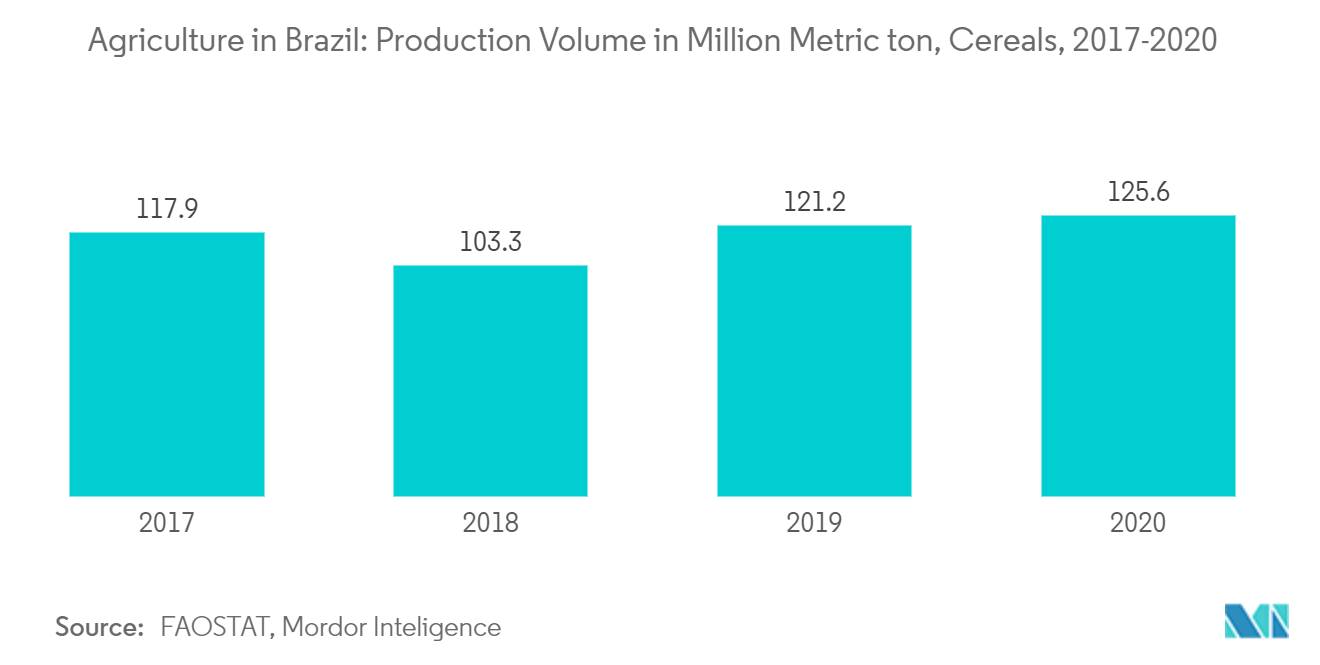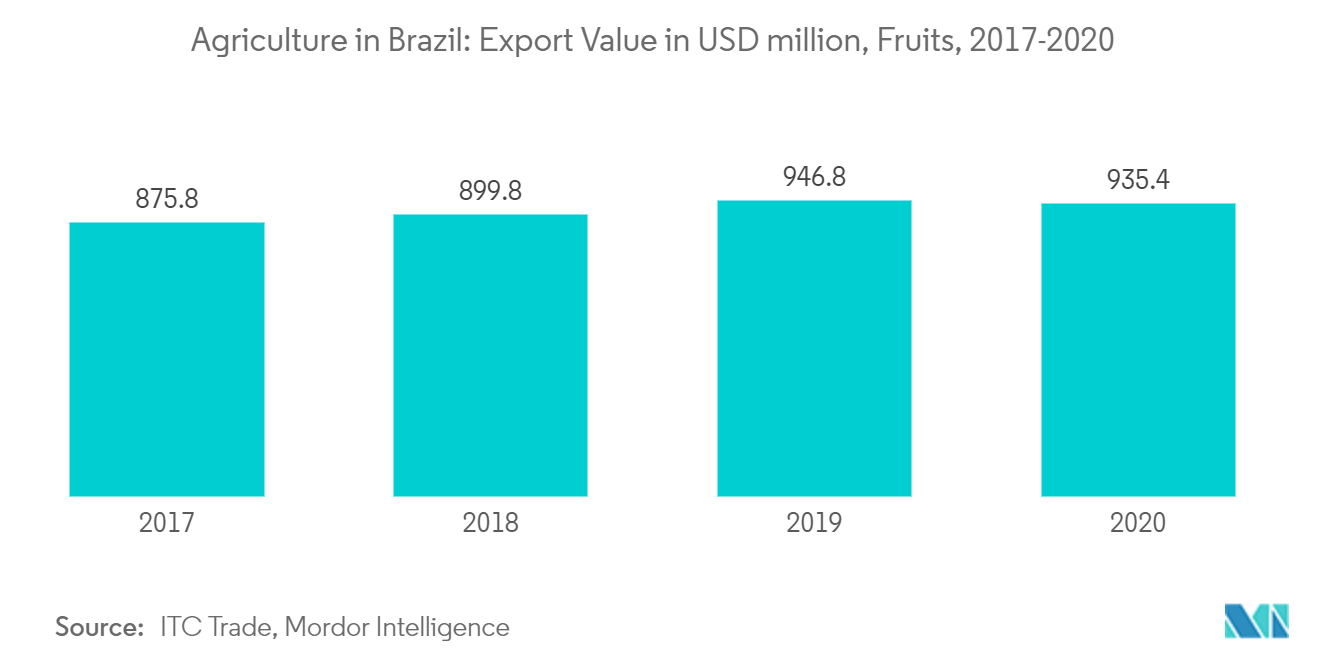Market Trends of Agriculture in Brazil
This section covers the major market trends shaping the Brazil Agriculture Market according to our research experts:
Increasing Food Crop Production
Most parts of the country have a favorable climate for rainfed crop production across the major producing regions, the Rio Grande do Sul, Santa Catarina, and Parana. The major food crops are soybean, maize, sugarcane, and rice, which account for 90% of the total crop area, and the country is one of the largest producers and exporters of these crops.
According to the Food and Agriculture Organization, in 2019, Brazil accounted for 65-70% of all rice-growing areas in South America. The country produces 52% of all irrigated rice, 38% of all rain-fed rice, and 92% of all upland rice in the region. Rice is grown in upland (62%) and in aid soils in the country. Compared to other rice-growing regions in the world, rice cultivation on larger farms in Brazil is predominantly mechanized. Direct seeding and purchased inputs are used for cultivation across the country.
Further, Brazilians use GM technology to control insects and weeds and increase production. The GM crops cultivated in Brazil are soybean, maize, and cotton, with traits like insect resistance using a toxin from the bacteria Bacillus thuringiensis (Bt), herbicide resistance (Ht), virus resistance (VR), and Ht-Bt, in case of both. In 2017, the total biotech crop area of 50.2 million hectares in Brazil comprised of 33.7 million hectares of biotech soybeans, followed by biotech maize and biotech cotton. All these factors are contributing to the expanding food crop production in the country.

Growing Trade Opportunities
Brazil has been advancing the export of various commodities to various countries. It is one of the world's largest producers of agricultural and food products, leading the world in oilseeds production, for example, soybean. Although Brazil takes a leading position in the export of corn and soybean, fruit exports are also growing.
A favorable climate has increased supply, allowing further fulfillment of shipments to other countries. Brazil has been registering a good performance in commodities' exports. For fresh fruits, the scenario is similar, with records for some of the most important fruits exported by Brazil. Lemons, limes, papayas, mangos, watermelons, and melons were the key fruits exported in 2021.
The increasing exports are also indicators of the high demand for the product worldwide. According to SECEX (Foreign Trade Department), 2021 Brazilian fruit exports have already surpassed 2020 shipments in both volume and revenue. For instance, the total volume of fresh fruit shipped abroad, including citrus peels and melons, was 1.05 million metric ton, with sales of just over USD 995 million even before November 2021. The Netherlands, the United Kingdom, the United States, Spain, and Argentina are some of the key destinations for fruit exports.
According to ITC Trade, in 2020, the country exported citrus fruits worth USD 106,779 thousand, which are mostly destined for European countries such as the Netherlands, the United Kingdom, Spain, and Germany. Thus, the rapidly expanding export market would further boost the domestic agriculture production in the country, leading to the overall growth of the market.


